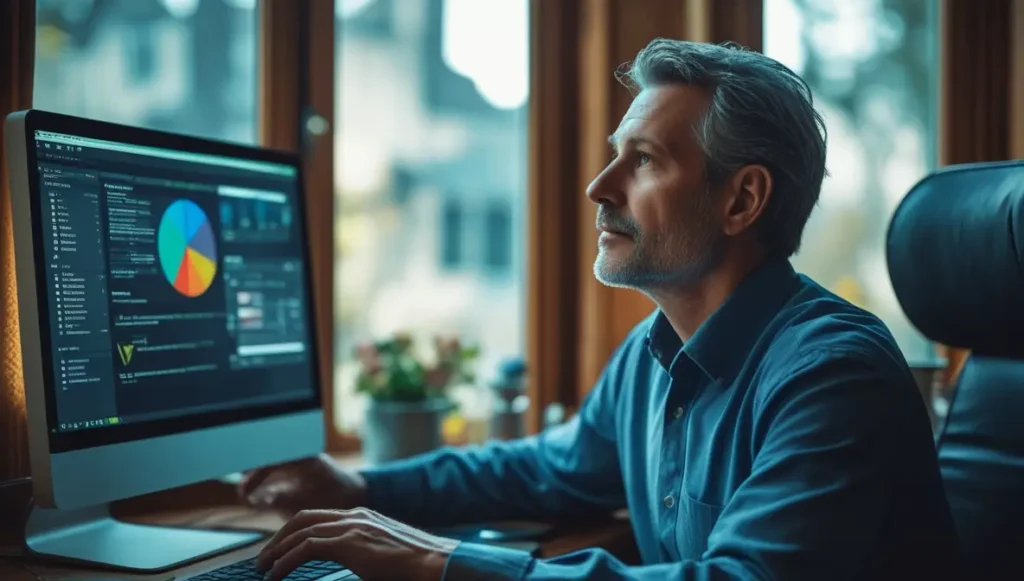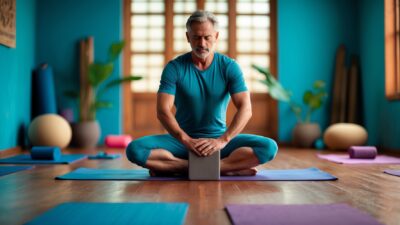In today’s digital age, screen time has become an inevitable part of our daily lives. Whether it’s for work, entertainment, or staying connected with loved ones, screens dominate much of our attention. For men in their early 50s, this constant exposure can take a toll on eye health. As we age, our eyes naturally become more sensitive, and prolonged screen use can exacerbate issues like dryness, strain, and even long-term damage. This article dives into practical strategies to protect your eyes from the harmful effects of screen time, ensuring that you maintain healthy vision well into your golden years.
Understanding the Impact of Screen Time on Eye Health
Before diving into solutions, it’s crucial to understand how screen time affects your eyes. Digital screens emit blue light, a high-energy visible light that can penetrate deep into the eyes. While blue light is present in natural sunlight and plays a role in regulating sleep cycles, excessive exposure from screens can disrupt these cycles and cause eye strain.
“The human eye is not naturally equipped to handle prolonged exposure to artificial blue light,” says Dr. Emily Carter, an ophthalmologist specializing in age-related eye conditions. “This is particularly concerning for individuals over 50, as their eyes are already more susceptible to fatigue and degeneration.”
Common symptoms of excessive screen time include headaches, blurred vision, dry eyes, and difficulty focusing. These issues, collectively known as digital eye strain or computer vision syndrome, can significantly impact your quality of life if left unaddressed.

Practical Steps to Reduce Eye Strain
Adjust Your Workspace Ergonomics
One of the simplest ways to reduce eye strain is by optimizing your workspace. Ensure that your computer monitor is positioned at eye level, about an arm’s length away. This minimizes the need to tilt your head or squint, reducing unnecessary strain on your eyes and neck.
- Use an adjustable chair to maintain proper posture.
- Place your keyboard within easy reach to avoid leaning forward.
- Consider using a standing desk to alternate between sitting and standing throughout the day.
Follow the 20-20-20 Rule
The 20-20-20 rule is a widely recommended practice to combat digital eye strain. Every 20 minutes, take a 20-second break and focus on something at least 20 feet away. This simple exercise helps reset your eyes’ focusing muscles and prevents fatigue.
“Consistency is key when implementing the 20-20-20 rule,” advises Dr. Michael Lee, an optometrist with over 20 years of experience. “Even small breaks can make a significant difference in reducing eye strain.”
Use Blue Light Filters
Blue light filters are an effective tool for minimizing the harmful effects of screen exposure. Most modern devices come with built-in blue light reduction settings, such as Night Shift on iPhones or Night Light on Windows computers. Alternatively, you can invest in blue light-blocking glasses specifically designed for screen use.
| Feature | Built-In Settings | Blue Light Glasses |
|---|---|---|
| Cost | Free | $30-$100 |
| Effectiveness | Moderate | High |
| Convenience | Requires manual setup | Always-on protection |

Optimize Screen Settings
Adjusting your screen’s brightness, contrast, and text size can also alleviate eye strain. Avoid overly bright screens, as they can cause glare and discomfort. Instead, aim for a brightness level that matches the ambient lighting in your room. Additionally, increasing text size can reduce the need to squint while reading.
Blink More Often
It may sound surprising, but people tend to blink less frequently when staring at screens. This reduced blinking can lead to dry eyes, a common complaint among heavy screen users. Make a conscious effort to blink regularly, and consider using lubricating eye drops if necessary.
Lifestyle Changes to Support Eye Health
Prioritize Regular Eye Exams
As you age, regular eye exams become increasingly important. An optometrist can detect early signs of age-related conditions like cataracts, glaucoma, or macular degeneration. They can also prescribe corrective lenses or recommend specific treatments tailored to your needs.
Maintain a Balanced Diet
Nutrition plays a vital role in maintaining healthy eyes. Foods rich in omega-3 fatty acids, vitamins C and E, zinc, and lutein can help protect your eyes from damage. Incorporate leafy greens, fish, nuts, and citrus fruits into your diet for optimal eye health.
- Leafy Greens: Spinach, kale, and collard greens are packed with lutein and zeaxanthin, antioxidants that protect against blue light damage.
- Fish: Salmon, tuna, and sardines are excellent sources of omega-3 fatty acids, which support retinal health.
- Nuts and Seeds: Almonds, walnuts, and flaxseeds provide essential nutrients like vitamin E and zinc.
Stay Hydrated
Dehydration can exacerbate dry eye symptoms, so it’s essential to drink plenty of water throughout the day. Aim for at least eight glasses of water daily to keep your eyes and body hydrated.
Get Enough Sleep
Quality sleep is crucial for eye recovery and overall health. During sleep, your eyes rest and repair themselves, preparing for another day of activity. Establish a consistent sleep schedule and create a relaxing bedtime routine to ensure adequate rest.
Advanced Solutions for Long-Term Protection
Invest in Anti-Glare Screens
Anti-glare screens or matte screen protectors can significantly reduce reflections and glare, making it easier on your eyes during extended screen sessions. These accessories are relatively inexpensive and easy to install.
Explore Vision Therapy
For individuals experiencing persistent eye strain or focusing difficulties, vision therapy may be beneficial. This specialized program involves exercises and techniques designed to improve eye coordination and stamina under the guidance of a trained professional.
Consider Artificial Tears
If you frequently experience dry eyes, artificial tears can provide immediate relief. Look for preservative-free options to minimize irritation. However, consult with your eye doctor before incorporating them into your routine.
Frequently Asked Questions (FAQ)
Q: How often should I get my eyes checked after turning 50?
A: It’s recommended to have a comprehensive eye exam every one to two years after the age of 50. If you wear glasses or have existing eye conditions, more frequent visits may be necessary.
Q: Can blue light cause permanent damage to my eyes?
A: While there’s no conclusive evidence linking blue light to permanent eye damage, prolonged exposure can contribute to digital eye strain and disrupt sleep patterns. Taking preventive measures is always advisable.
Q: Are blue light glasses worth the investment?
A: Yes, especially if you spend several hours a day in front of screens. Blue light glasses offer consistent protection without requiring manual adjustments, unlike built-in device settings.
Q: What are some warning signs of serious eye problems?
A: Symptoms like sudden vision loss, persistent pain, flashes of light, or floaters warrant immediate medical attention. These could indicate underlying conditions requiring prompt treatment.



